
The radial engine is a reciprocating type internal combustion engine configuration in which the cylinders "radiate" outward from a central crankcase like the spokes of a wheel. It resembles a stylized star when viewed from the front, and is called a "star engine" in some other languages.

The Bristol Pegasus is a British nine-cylinder, single-row, air-cooled radial aero engine. Designed by Roy Fedden of the Bristol Aeroplane Company, it was used to power both civil and military aircraft of the 1930s and 1940s. Developed from the earlier Mercury and Jupiter engines, later variants could produce 1,000 horsepower from its capacity of 1,750 cubic inches by use of a geared supercharger.
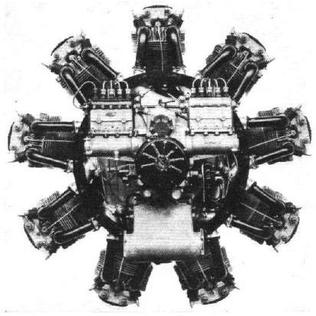
The Phoenix was an experimental version of the Bristol Aeroplane Company's Pegasus engine, adapted to run on the Diesel cycle. Only a few were built between 1928 and 1932, although samples fitted to a Westland Wapiti held the altitude record for diesel-powered aircraft at 27,453 ft from 11 May 1934 until World War II. The primary advantage of the Phoenix was better fuel efficiency at cruise, by up to 35%.

The Pratt & Whitney R-4360 Wasp Major is an American 28-cylinder four-row radial piston aircraft engine designed and built during World War II. First run in 1944, at 4,362.5 cu in (71.5 L), it is the largest-displacement aviation piston engine to be mass-produced in the United States, and at 4,300 hp (3,200 kW) the most powerful. It was the last of the Pratt & Whitney Wasp family, and the culmination of its maker's piston engine technology.

The Jumo 205 aircraft engine was the most famous of a series of aircraft diesel engines produced by Junkers. The Jumo 204 first entered service in 1932. Later engines of this type comprised the experimental Jumo 206 and Jumo 208, with the Jumo 207 produced in some quantity for the Junkers Ju 86P and -R high-altitude reconnaissance aircraft, and the 46-meter wingspan, six-engined Blohm & Voss BV 222 Wiking flying boat. All three of these variants differed in stroke and bore and supercharging arrangements. In all, more than 900 of these engines were produced, in the 1930s and through most of World War II.

The Armstrong Siddeley Cheetah is a seven-cylinder British air-cooled aircraft radial engine of 834 cu in capacity introduced in 1935 and produced until 1948. Early variants of the Cheetah were initially known as the Lynx Major.

The Wright R-975 Whirlwind was a series of nine-cylinder air-cooled radial aircraft engines built by the Wright Aeronautical division of Curtiss-Wright. These engines had a displacement of about 975 cu in (15.98 L) and power ratings of 300–450 hp (220–340 kW). They were the largest members of the Wright Whirlwind engine family to be produced commercially, and they were also the most numerous.
The Packard 1A-1500 was an American 12-cylinder liquid-cooled 60-degree Vee piston aircraft engine designed in 1924. Test flown in the second prototype Douglas XO-2, it proved to be unreliable. Only 29 engines were built.

The Bellanca CH-300 Pacemaker was a six-seat utility aircraft, built primarily in the United States in the 1920s and 1930s. It was a development of the Bellanca CH-200, fitted with a more powerful engine and, like the CH-200, soon became renowned for its long-distance endurance.
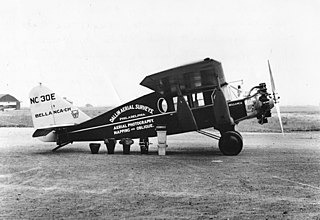
The Bellanca CH-200 Pacemaker was a six-seat, high-wing, single-engine utility aircraft built in the United States in the 1920s. It was a development of the Wright WB-2 that Bellanca had acquired the rights to in 1926 and was the first Bellanca-branded aircraft to gain a type certificate. The CH-200 was used in a number of pioneering long-distance flights and attempts on distance and endurance records.
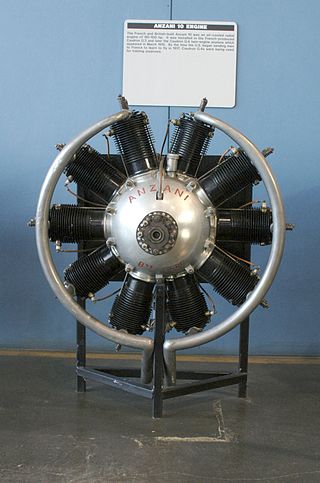
The Anzani 10 was a 1913 10-cylinder air-cooled radial aircraft engine. It powered several experimental aircraft and also the later production versions of the Caudron G.3 reconnaissance aircraft, the Caudron G.4 bomber/trainer and the first production Cessna, the Model AA.

The Wright R-790 Whirlwind was a series of nine-cylinder air-cooled radial aircraft engines built by Wright Aeronautical Corporation, with a total displacement of about 790 cubic inches (12.9 L) and around 200 horsepower (150 kW). These engines were the earliest members of the Wright Whirlwind engine family.
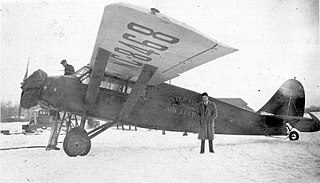
The Stinson Detroiter was a six-seat cabin airliner for passengers or freight designed and built by the Stinson Aircraft Syndicate, later the Stinson Aircraft Corporation. Two distinct designs used the Detroiter name, a biplane and a monoplane.

The Packard 1A-2500 is an American V-12 liquid-cooled aircraft engine designed by Packard in 1924 as a successor to the World War I-era Liberty L-12. Five aero variants were produced, of which the 3A-2500 was the most numerous. Three marine versions, used most prominently in American World War II PT-boats, the 3M-2500, 4M-2500, and 5M-2500, were also derived from it.
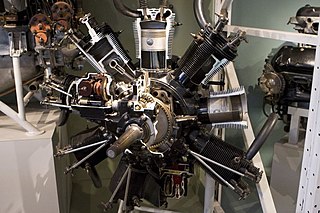
The Wright Whirlwind was a family of air-cooled radial aircraft engines built by Wright Aeronautical. The family began with nine-cylinder engines, and later expanded to include five-cylinder and seven-cylinder varieties. Fourteen-cylinder twin-row versions were also developed, but these were not commercially produced.
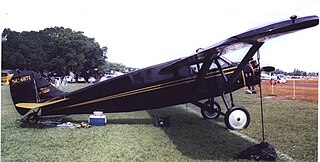
The Stinson Junior was a high-winged American monoplane of the late 1920s, built for private owners, and was one of the first such designs to feature a fully enclosed cabin.

The Packard X-2775 was an American experimental liquid-cooled aircraft engine. The engine was constructed as a single crankcase with four banks of six cylinders in what is close to an X-configuration. The engine consisted of two 60° V12 engines, one upright and one inverted, sharing a common crankcase. Although technically incorrect, the engine has been characterized as two Packard 1A-1500 V-12 engines coupled with a mutual crankcase.

The Guiberson A-1020 is a four-stroke diesel radial engine developed for use in aircraft and tanks.

The Fiat AN.1 was an experimental Italian water-cooled diesel straight six cylinder aircraft engine from the late 1920s.
The Franklin O-265 was an American air-cooled aircraft engine of the early 1940s. The engine was of six-cylinder, horizontally-opposed layout and displaced 265 cu in (4 L). The power output ranged between 120 hp (89 kW) and 140 hp (104 kW) depending on variant. The 6ACG-264 featured a geared propeller drive.


















